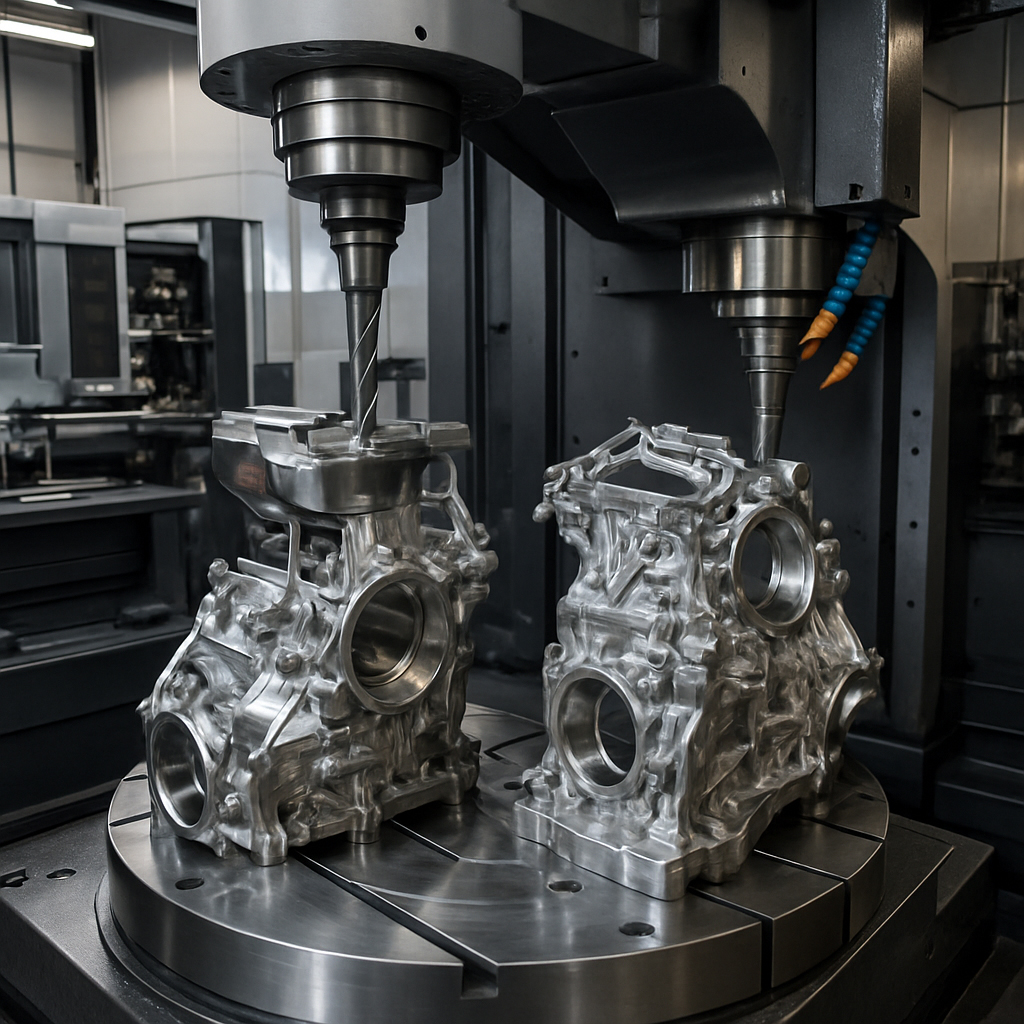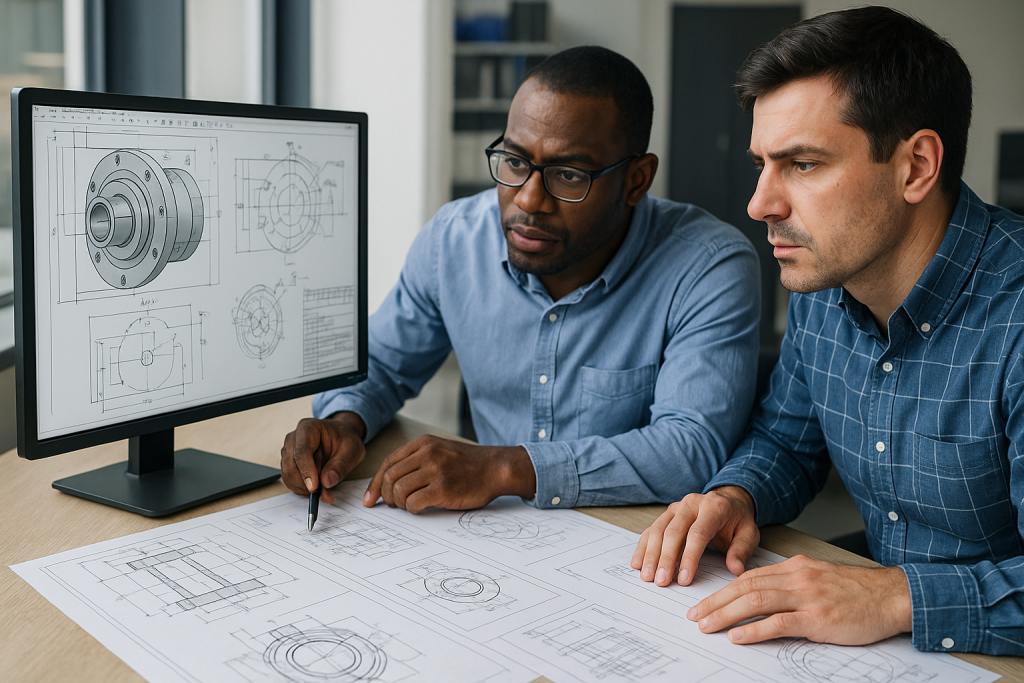
In today’s automotive industry, innovation is accelerating faster than ever. Electric vehicles, lightweight structures, and performance-optimized parts are pushing engineers and manufacturers to find smarter, more efficient ways to produce complex components. One standout technology driving this shift is 5-axis CNC machining—a process that delivers unparalleled precision, speed, and flexibility.
At the forefront of this transformation is Boona Prototypes, a global provider of high-precision prototyping and low-volume manufacturing. Their advanced CNC machining capabilities, including 5-axis systems, make them a preferred partner for the world’s most demanding automotive projects.
I. What Is 5-Axis CNC Machining?
Unlike traditional 3-axis machining that moves along the X, Y, and Z linear axes, 5-axis CNC machining allows simultaneous movement along two additional rotational axes. This means the cutting tool can approach the workpiece from virtually any direction—ideal for producing complex geometries in a single setup.
II. Why 5-Axis Machining Matters in Automotive Manufacturing
1. Complex Geometry in a Single Setup
Automotive parts like cylinder heads, turbo housings, and intake manifolds often feature intricate curves, undercuts, and deep cavities. 5-axis machining eliminates the need for multiple re-clampings and reduces setup time—minimizing human error and maximizing dimensional accuracy.
2. Superior Surface Finish
By maintaining optimal tool angles and continuous motion, 5-axis machining ensures a smoother surface finish—often reaching Ra 0.1–0.8 µm, which reduces the need for post-processing. This is especially valuable for engine components, lighting housings, and aerodynamic surfaces.
3. Greater Material Efficiency
5-axis machines efficiently work with a wide range of automotive materials—from lightweight aluminum alloys (6061, 7075-T6) to titanium, Inconel, and even carbon fiber composites. These materials are key in improving fuel economy and thermal performance.
4. Time & Cost Savings
With fewer setups, optimized tool paths, and faster cutting speeds, 5-axis machining can reduce lead time by 20–40% compared to 3-axis processes—translating directly into faster development cycles for OEMs and Tier 1 suppliers.
III. Boona Prototypes: Your Trusted 5-Axis CNC Machining Partner
Boona Prototypes offers advanced 5-axis CNC machining services for the automotive, aerospace, medical, and robotics industries. Their combination of cutting-edge equipment, experienced engineers, and robust quality systems makes them ideal for rapid prototyping and custom part production.
Technical Capabilities at a Glance:
| Feature | Specification |
|---|---|
| Machining Axes | 3-axis, 4-axis, and 5-axis simultaneous CNC milling |
| Tolerance | ±0.01 mm (±10 microns) |
| Max Part Size | 1200 × 800 × 500 mm |
| Materials | Aluminum, Titanium, Stainless Steel, Carbon Fiber, ABS, POM, PC |
| Surface Finishes | Anodizing, Polishing, Bead Blasting, Painting, Powder Coating |
| Certifications | ISO 9001:2015, ISO 13485:2016, IATF 16949 |
Learn more about their precision machining services and how they achieve tight tolerances for automotive-grade components.
IV. Real-World Automotive Applications
Boona’s 5-axis machining expertise enables production of critical automotive components such as:
-
Engine & Transmission Housings – With internal channels and mounting surfaces machined in one operation.
-
Suspension Components – Control arms, uprights, and knuckles made from high-strength aluminum or titanium.
-
Brake Calipers – Lightweight and high-performance aluminum monoblocks.
-
Lighting Mold Tools – Clear polycarbonate headlamp and taillight housings requiring flawless surface quality.
-
Battery Cooling Plates – Thin-walled aluminum parts for EV thermal management systems.
V. Case Study: Lightweight Aluminum Brake Caliper
A recent Boona project involved machining a 7075-T6 aluminum brake caliper designed for a motorsports application. The part featured:
-
Wall thickness: 3.5 mm
-
Surface finish: Ra 0.4 µm
-
Dimensional tolerance: ±0.01 mm
-
Cycle time: Reduced from 6.5 hours (3-axis) to 3.8 hours (5-axis)
-
Weight savings: 37% over cast version
The ability to machine in a single setup resulted in improved part accuracy, faster turnaround, and no need for post-machining realignment.
VI. Supporting Design for Manufacturability (DFM)
Boona engineers work closely with customers from the CAD model stage, offering Design for Manufacturability (DFM) suggestions to optimize part geometry for 5-axis machining. Their expertise in toolpath planning, fixture design, and CNC programming ensures high success rates even for first-time prototypes.
Want to go from CAD to real part in just days? Explore rapid prototyping solutions tailored to the automotive industry.
VII. The Future of 5-Axis Machining in Automotive
As vehicle design evolves, 5-axis machining will become even more critical. Key future trends include:
-
AI-Driven CAM Toolpaths for faster, more adaptive machining
-
Digital Twin Integration for real-time simulation and monitoring
-
Sustainable Machining with MQL and recycled materials
-
On-Demand Manufacturing Platforms connecting OEMs directly with shops like Boona
Conclusion
From engine housings to aerodynamic trims, 5-axis CNC machining is a cornerstone of modern automotive manufacturing. It combines accuracy, speed, and complexity into a single efficient process. With a proven track record, cutting-edge equipment, and ISO-certified quality control, Boona Prototypes is ready to help you turn your most complex automotive designs into precision-machined reality.
FAQs
Q1: What is 5-axis CNC machining, and how does it differ from 3-axis machining?
5-axis CNC machining uses three linear axes (X, Y, Z) and two additional rotary axes to machine parts from virtually any angle. Unlike 3-axis machines, which require multiple setups for complex geometries, 5-axis machining enables single-setup manufacturing, improving precision and reducing time.
Q2: Why is 5-axis machining important for automotive components?
Modern automotive parts often feature intricate designs, undercuts, and compound curves. 5-axis machining allows for precise manufacturing of these components while maintaining tight tolerances (±0.01 mm), high-quality surface finishes (Ra 0.1–0.8 µm), and improved material utilization.
Q3: What materials can be used in 5-axis CNC machining for automotive applications?
Common materials include:
-
Aluminum alloys (e.g., 6061, 7075-T6)
-
Titanium and Inconel for high-stress parts
-
Stainless steel for strength and corrosion resistance
-
Plastics (e.g., ABS, POM, PC) for interior components
-
Carbon fiber and composites for lightweight structures
Boona Prototypes specializes in machining all of these materials. Explore their CNC machining capabilities.
Q4: What are the tolerances achievable with Boona Prototypes’ 5-axis machining?
Boona Prototypes offers tolerances as tight as ±0.01 mm, ensuring the fit, form, and function of even the most demanding automotive parts. They also use advanced metrology tools like CMMs and micrometers to verify each part’s accuracy. Learn more about their precision machining services.
Q5: Can Boona Prototypes handle low-volume or prototype automotive production?
Yes. Boona Prototypes is optimized for rapid prototyping and low-volume production (1–1000+ units). They support engineers during the product development stage, offering fast turnaround and expert DFM support. Discover their rapid prototyping process.
Q6: What surface finishes are available for automotive CNC machined parts?
Surface finishes include:
-
Anodizing (Type II/Type III)
-
Polishing
-
Bead blasting
-
Powder coating
-
Painting
These options enhance durability, aesthetics, and corrosion resistance for automotive applications.
Q7: How fast is 5-axis CNC machining for urgent automotive projects?
With efficient toolpaths and reduced setups, 5-axis machining can cut lead times by up to 40%. Boona Prototypes can deliver functional prototypes in as fast as 2–5 working days, depending on complexity and material.
Q8: How does 5-axis machining reduce production costs?
Although 5-axis machines are more advanced, they save costs by:
-
Reducing setup time
-
Minimizing part handling
-
Lowering scrap rates
-
Delivering higher first-pass yield
The result is greater efficiency and lower total production costs, especially for complex components.


